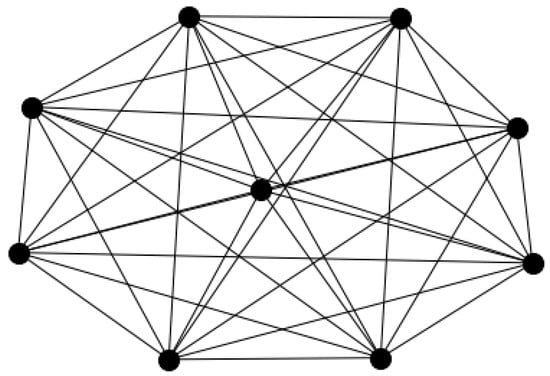
| Version | Summary | Created by | Modification | Content Size | Created at | Operation |
|---|---|---|---|---|---|---|
| 1 | Robert Friedman | -- | 1501 | 2023-06-21 11:00:32 | | | |
| 2 | Vicky Zhou | Meta information modification | 1501 | 2023-06-21 11:01:52 | | |
Video Upload Options
Nature is composed of elements at various spatial scales, ranging from the atomic to the astronomical level. In general, human sensory experience is limited to the mid-range of these spatial scales, in that the scales which represent the world of the very small or very large are generally apart from our sensory experiences. Furthermore, the complexities of Nature and its underlying elements are not tractable nor easily recognized by the traditional forms of human reasoning. Instead, the natural and mathematical sciences have emerged to model the complexities of Nature, leading to knowledge of the physical world. This level of predictiveness far exceeds any mere visual representations as naively formed in the Mind. In particular, geometry has served an outsized role in the mathematical representations of Nature, such as in the explanation of the movement of planets across the night sky. Geometry not only provides a framework for knowledge of the myriad of natural processes, but also as a mechanism for the theoretical understanding of those natural processes not yet observed, leading to visualization, abstraction, and models with insight and explanatory power. Without these tools, human experience would be limited to sensory feedback, which reflects a very small fraction of the properties of objects that exist in the natural world. As a consequence, as taught during the times of antiquity, geometry is essential for forming knowledge and differentiating opinion from true belief. It not only provides a framework for understanding astronomy, classical mechanics, and relativistic physics, but also the morphological evolution of living organisms, along with the complexities of the cognitive systems. Geometry also has a role in the information sciences, where it has explanatory power in visualizing the flow, structure, and organization of information in a system. This role further impacts the explanations of the internals of deep learning systems as developed in the fields of computer science and engineering.
Historical Perspective on Geometry
The Explanatory Power of Geometry

References
- The Stanford Encyclopedia of Philosophy; Stanford University: Stanford, CA, USA, 2019; Available online: https://plato.stanford.edu/entries/pythagoreanism (accessed on 25 April 2023).
- Proust, D. The Harmony of the Spheres from Pythagoras to Voyager. Proc. Int. Astron. Union 2009, 5, 358–367.
- Murschel, A. The Structure and Function of Ptolemy’s Physical Hypotheses of Planetary Motion. J. Hist. Astron. 1995, 26, 33–61.
- Van Helden, A. Galileo, telescopic astronomy, and the Copernican system. In Planetary Astronomy from the Renaissance to the Rise of Astrophysics; Taton, R., Wilson, C., Eds.; Cambridge University Press: Cambridge, UK, 1989.
- Settle, T.B. An Experiment in the History of Science: With a simple but ingenious device Galileo could obtain relatively precise time measurements. Science 1961, 133, 19–23.
- Truesdell, C. History of Classical Mechanics (Part I). Naturwissenschaften 1976, 63, 53–62.
- Kleppner, D. A short history of atomic physics in the twentieth century. Rev. Mod. Phys. 1999, 71, S78.
- Hartshorne, R. Geometry: Euclid and Beyond; Springer Science & Business Media: New York, NY, USA, 2013.
- Arthur, R.T. Minkowski Spacetime and the Dimensions of the Present. Philos. Found. Phys. 2006, 1, 129–155.
- Friedman, R. Themes of advanced information processing in the primate brain. AIMS Neurosci. 2020, 7, 373.
- Waddell, W.W. The Parmenides of Plato; James Maclehose and Sons: Glasgow, UK, 1894.
- Barrett, T.W. Conservation of information. Acta Acust. United Acust. 1972, 27, 44–47.
- Friedman, R. Detecting Square Grid Structure in an Animal Neuronal Network. NeuroSci 2022, 3, 91–103.
- Linial, N.; London, E.; Rabinovich, Y. The geometry of graphs and some of its algorithmic applications. Combinatorica 1995, 15, 215–245.
- Goswami, S.; Murthy, C.A.; Das, A.K. Sparsity measure of a network graph: Gini index. Inf. Sci. 2018, 462, 16–39.
- Vaswani, A.; Shazeer, N.; Parmar, N.; Uszkoreit, J.; Jones, L.; Gomez, A.N.; Kaiser, L.; Polosukhin, I. Attention is all you need. In Proceedings of the 31st Conference on Neural Information Processing System, Long Beach, CA, USA, 4–9 December 2017; pp. 5998–6008.
- Chen, L.; Lu, K.; Rajeswaran, A.; Lee, K.; Grover, A.; Laskin, M.; Abbeel, P.; Srinivas, A.; Mordatch, I. Decision Transformer: Reinforcement Learning via Sequence Modeling. Adv. Neural Inf. Process. Syst. 2021, 34, 15084–15097.
- Odum, E.P. Energy flow in ecosystems—A historical review. Am. Zool. 1968, 8, 11–18.
- Hu, Y.; Buehler, M.J. Deep language models for interpretative and predictive materials science. APL Mach. Learn. 2023, 1, 010901.
- Schmidhuber, J. Learning to Control Fast-Weight Memories: An Alternative to Dynamic Recurrent Networks. Neural Comput. 1992, 4, 131–139.




